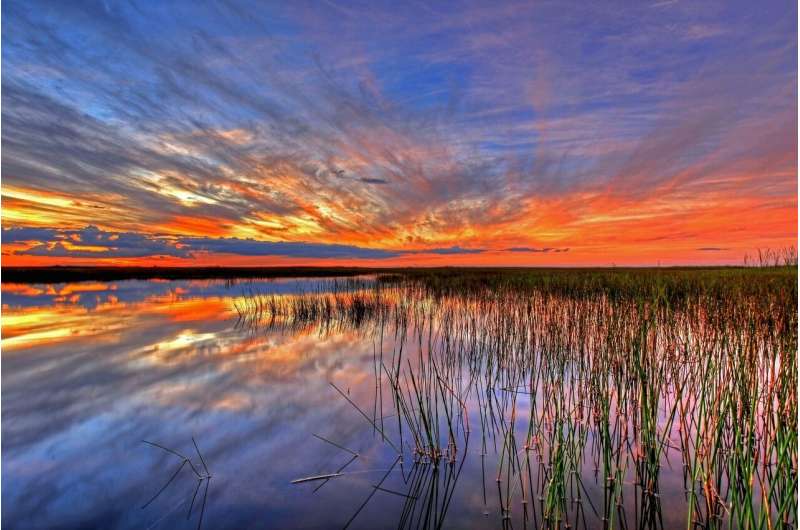Everglades poised for a 'phenomenal' wading bird season with right water balance

South Florida is in for a "phenomenal" wading bird year after a record-breaking rainy season increased the amount of fish in historical nesting grounds while a dry winter has created the perfect conditions for nesting.
As the water dries up in the northern marshes of water conservation areas and western marl prairies, large colonies of great and snowy egrets and wood storks that have already started nesting have been spotted during surveillance flights by the South Florida Water Management District.
Last month, the birds were still using the southwestern part of the Everglades near Florida Bay because the north was still wet from drenching rains that filled up water conservation areas to the brim. But now, as water recedes in the western and northern edges of the Everglades, these indicators of overall Everglades health are moving back to those areas.
"Now we are seeing the birds move to areas that are more in line with where they historically nested," said Lawrence Glenn, the district's water resources chief, during the governing board's monthly meeting on Thursday. "We are poised to have a pretty phenomenal wading bird nesting year in the Everglades."
As a nutrient-poor environment, the Everglades needs to get its delicate water balance right to sustain wading birds: a plentiful rainy season to produce abundant fish and then a steep drop in water levels at the start of the dry season, which is when nesting kicks off. By then, the fish move into drier, more concentrated pools and birds can successfully nest and feed their young.
The extraordinary wet season also freshened up coastal areas in Florida Bay, which has been hammered by seagrass die-offs and algae blooms that worsened with high salinity levels in the past few years.
Salinity is not a concern at the moment, Glenn said. At this time last year, salinity levels were so high that it looked like the bay was headed to hyper-salinity territory, when seagrass die-offs are likely to occur.
"This year we are seeing some of the freshest conditions we've had in a while," he said. "We are not worried about a seagrass die-off currently."
And better water conditions are helping the recovery of seagrass beds in the bay. Large areas of turtle grass, the dominant species in Florida Bay, were devastated by a die-off in 2015, and were again hammered by Hurricane Irma in 2017. That species is still sparse on the bay bottom, but shoal grass, which is considered a pioneer species, is quickly expanding and creating better conditions for overall seagrass recovery, Glenn said.
"Shoal grass is stabilizing the sediment, keeping the water clear and improving the conditions for other species to come in," he said. "We will probably see recovery in the next five years," he said.
©2021 Miami Herald.
Distributed by Tribune Content Agency, LLC.



















